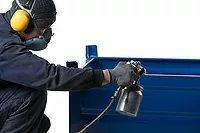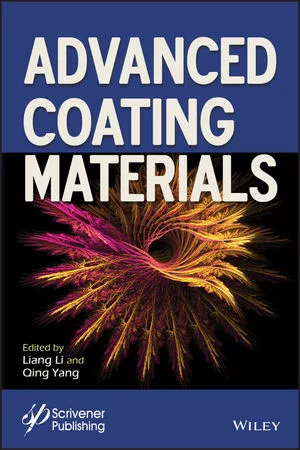Advanced Spray Pattern and Pressure Distribution Testing
Increasingly sensitive pressure sensor arrays are helping manufacturers understand spray dispersion and impact force to improve product design



As a result of increasing sensitivity and resolution of novel capacitive sensor array technology, designers working on applications in fluid and gas spray are now gaining valuable insight and information into particle impact, distribution and accumulation, information that was previously unmeasurable using traditional techniques. Armed with this information, manufacturers gain a direct competitive advantage through improved product design and manufacturing, along with more sophisticated testing and characterization.
Spray, Streams and Mists
The ability to measure a wide range of spray impact pressure and distribution patterns has direct applicability across a variety of industry application areas including the design and manufacture of industrial spray nozzles, paint or polyurethane spray guns, showerheads, automotive windshield wiper fluid dispensers, pepper spray dispensers and medical devices.
However, designers working in such application areas have until recently struggled to accurately quantify the particle distribution and impact pressure of fluid or gas spray. This directly impacts key business and environmental factors, such as human comfort in the case of shower water jets, and airplane fuel savings associated with optimal paint spray quantity. A significant challenge affecting the accuracy and feasibility of spray measurement, in such applications, is the wide and large range of parameters directly affecting the process. These include droplet size, droplet mass, particle density and viscosity, each varying greatly between desired function and overall application. A cannon-type paint sprayer for large-area industrial applications, for example, differs significantly from the fine blood-clotting spray used on wounds in healthcare.
The other main challenge associated with such measurement was the traditional limitations of force and pressure sensor technology. Typical force sensors measure a single value at a discrete location. Although more sophisticated sensor arrays exist, basic resistive-technology approaches can feature large sensing gaps and are not sensitive enough to measure the minute levels of pressures encountered in spray droplet mapping and sensing.
Now, more accurate, stable and repeatable capacitive-based tactile sensor arrays are available that measure a wide range of pressure values over areas of interest. This innovative technology is providing unprecedented, quantifiable data to engineers, designers and researchers on spray pattern and distribution that, in turn, facilitates product and process optimization.
Testing and Evaluation
Spray testing can generally be divided into two distinct categories: first, pressure or impact measurement and second, spray distribution (pattern) evaluation. Depending on the type of testing, elapsed time may play a key role in determining the total pressure of a stream or accumulation of particles, for example, when evaluating the dripping of nozzles post-spraying.
Traditionally, the methods available for spray testing and measurement have until recently been decidedly primitive, insensitive and not easily recordable. Spray pattern evaluation, for example, typically involved spraying a liquid on paper or tissue for visual examination, while impact forces were often measured using a pressure plate and weight scales accumulating the droplet mass over time.
“There really haven’t been many tools available to adequately measure spray pressure and distribution, particularly at lower levels of pressure,” says Dr. Jae Son, President of Pressure Profile Systems (PPS), a world leader in providing capacitive tactile sensing solutions.
However, with recent advances in sensor array and data acquisition technology, more companies are investing significant monies to develop state-of-the-art research and design facilities to capture spray patterns and pressure information so they can translate that information into a better experience with their product.
Capacitive Sensor Arrays
Enabling accurate and repeatable measurement of such fine spray information is sensitive capacitive tactile sensor arrays, such as those designed and manufactured by PPS. Their thin, flexible and conformable tactile array sensors can be placed on flat and complex shaped objects, allowing spray pressure and patterns measurement direct on the final landing area.
To build its tactile array sensors, PPS arranges the electrodes as orthogonal, overlapping strips. A distinct capacitor is formed at each point where the electrodes overlap. By selectively scanning a single row and column, the capacitance at that location, and thus the local pressure, is measured.
PPS array sensors feature up to 8,192 integrated sensing elements while measuring pressures as small as 10 Pa, enabling ultrafine resolution capture of spray pressure patterns. This is roughly the pressure exerted onto a surface from the impact of a sprayed droplet of water of volume 1 mm3.
Careful thought must be given to fully understand the effect and ratio of droplet size to sensing element area. When considering the small pressures encountered in spray measurement applications, numerous design parameters are optimized to create sensors of the utmost sensitivity. As pressure is a measurement of force over area, when considering individual spray droplets, the pressure produced from the impact force on a surface, determined by the droplet mass and momentum, clearly decreases as the area of impact increases. Therefore, to maximize sensitivity and aid overall measurement accuracy, parameters such as sensor element area and subsequent element calibration play a critical role in overall measurement success. PPS’s capability in sensor design and manufacture allow for elements as small as 1 x 1 mm, with extremely stable mechanical properties, for successful and accurate long-term repeated use. Another approach combines force sensors to obtain accurate total force while capturing the pressure distribution through the capacitive pressure array sensor.
Another key consideration of spray pressure and pattern measurement is the potential mismatch in speed at which discrete particles impact the surface and the resultant sensing acquisition rate of the measurement system. There can exist orders of magnitude difference between these parameters, and as such when considering high-speed streams, thought and care must be taken to understand exactly the timing and sequence of events at the impact point. Fortunately, innovative electronic and communication developments within PPS have considerably enhanced the rate of modern high-performance pressure sensors, with sampling speeds greater than 200 Hz now possible.
As such, and according to Dr. Son, the spray measurements that can be captured by PPS sensor technology include the impact pressure generated by fine spray particles, spray distribution across surfaces and accumulation of a fluid or mist over time.
Impact
Product designers and process engineers may need to know the impact or pressure generated by particles hitting a surface. For instance, customers will reject a paint-stripping product whose pressure damages the wood underneath.
To measure spray, a capacitive sensor array integrates the accumulated impact over time and processes the resulting data to evaluate overall pressure.
When considering showerhead design, for example, the issue of pressure involves measuring streams of water. In reality, those streams are not continuous. Instead, they are composed of individual water droplets moving at a high rate of speed. By measuring the accumulated impact of the droplets over time, the overall water pressure can be derived.
In automotive testing, for example, impact pressure testing has also been used to determine the peak pressure and distribution of water sprayed up into the engine compartment when cars drive over puddles at various speeds. This information directly informs designers and engineers on the optimum location of water-sensitive parts such as the radiator, suspension and exhaust tubes for successful long-term operation.
“When cars drive over large puddles, huge amounts of water get splashed into the engine compartment and can create a lot of damage,” says Dr. Son, who early in his career worked on a project to protect automotive transmissions from this type of event.
In testing conducted by Syscom Inc. of Japan, this type of situation was simulated and data collected in an attempt to determine areas of the underbody that might require structural reinforcement or protective baffling, improved corrosion prevention coatings, and even potential component relocation.
According to Fujimi Sakamoto, an engineer on the project, a splash test pool was utilized to simulate puddles. During the test, several variables were changed, including water level depth, rate of driving speed and the condition of the tire tread (new or worn).
In previous tests, small, single-point pressure sensors approximately 10 mm in diameter were used to measure the water impact pressure. However, even with several sensors placed in various locations and on engine components, it was difficult to determine the peak water pressure. In addition, the sensor’s height (20 mm) was disturbing some of the water flow.
In addition to providing a high-resolution array where thousands of points could be measured, Sakamoto says he also appreciated that PPS’ tactile array was extremely thin and so it did not interfere with the experiment.
Spray Patterns
Beyond its traditional pressure sensing role, the capacitive sensor array is also capable of performing spray pattern sensing. Spray pattern sensing is a new concept developed that compares the electrical properties of the air surface to that of the spray. Consequently, tactile pressure sensor technology is able to identify where a sprayed fluid actually lands.
Such digital measurement information can be visually viewed in real time to allow designers and engineers to analyze the data and better understand the current spray distribution. This directly allows them to quickly and efficiently improve and revise product designs to achieve optimal results.
Accumulation
Highly sensitive tactile sensors also allow designers to quantify spray pressure data even in applications where extremely low pressures are involved. It is the low-pressure end of the spectrum that has been traditionally difficult to measure, says Dr. Son. This extends to mists – tiny water droplets suspended in the atmosphere – where pressures are so low that it is difficult to measure at all. In some situations, there simply isn’t enough pressure to measure, even when using a highly sensitive membrane-type sensor.
Capacitive array sensor technology enables the assessment of spray distribution even for applications where the pressure is infinitesimal, such as the light moisture distribution associated with the action of wiping. In this type of testing, measurements quantify how much fluid is deposited on the sensor and in what pattern. In particular, this approach is most suitable in cases where uniform distribution - and not uniform pressure - is the primary goal of the testing.
The sensor array technology is so sensitive it can measure as little as one gram of fluid per square meter. “With the sensitivity of the sensors, we are, in a very real sense, approaching the boundary limits of pressure,” says Dr. Son.
Despite advancements in the tactile array technology, there remains a trade-off between size, resolution and speed that limits the areas that can be measured at the highest resolutions and sampling rates.
However, as tactile sensors continue to evolve and become even more sensitive, sophisticated measurement of the pressures of fluids and gases at much lower pressures will become possible.
According to Dr. Son, the next frontier is to develop capacitive tactile sensors that can measure extremely low-pressure airflow, which will open up many new potential applications.
For more information, visit www.pressureprofile.com or e-mail info@pressureprofile.com.
Looking for a reprint of this article?
From high-res PDFs to custom plaques, order your copy today!






